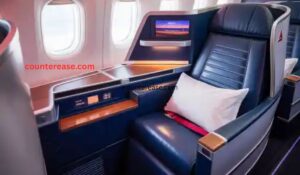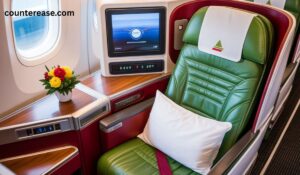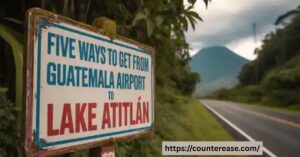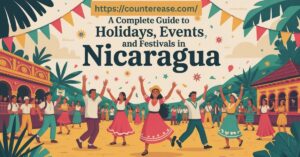The cost-of-living-Peru refers to the average expenses required to maintain a comfortable lifestyle in the country, covering essentials like housing, food, transportation, healthcare, and leisure. It’s a practical measure that helps travelers, digital nomads, and expats understand how much money they’ll need each month depending on their lifestyle choices. From city life in Lima to the quieter pace of Cusco and Arequipa, this measure paints a clear picture of everyday financial realities.
Imagine savoring fresh ceviche for a fraction of what it costs elsewhere, or renting an apartment with stunning Andean views at a surprisingly affordable rate. Peru blends rich culture and natural beauty with economic accessibility, making it a dream destination for those seeking value without compromise. The mix of low daily costs and diverse lifestyle options makes the country both appealing and exciting.
Understanding the cost-of-living-Peru reveals more than just numbers—it highlights the balance between affordability and quality of life. Whether planning a short stay or considering long-term relocation, knowing the average expenses can shape realistic expectations and smooth decision-making. With Peru offering budget-friendly options alongside modern conveniences, it stands out as one of South America’s most attractive destinations for smart living.
A Complete Expat’s Guide (2025)
Living in Peru has become increasingly popular among digital nomads, retirees, and adventure seekers looking for an affordable lifestyle without sacrificing quality of life. With its rich culture, stunning landscapes, and incredibly low cost of living, Peru offers one of the most compelling value propositions in South America.

Recent data shows that you can live comfortably in Peru for as little as $800-1,200 per month, making it roughly 60-70% cheaper than living in the United States or Europe. Whether you’re drawn to Lima’s cosmopolitan energy, Cusco’s historical charm, or Arequipa’s colonial beauty, understanding the real costs will help you plan your Peruvian adventure effectively.
See Also: Everything to Know About Capurgana, Colombia
Why Peru’s Your Budget-Friendly Paradise
Peru stands out among Latin American destinations for several compelling reasons. The country’s stable economy has kept prices relatively consistent, while the favorable exchange rate makes your dollars stretch considerably further.
Unlike neighboring countries that have experienced significant inflation, Peru maintains affordable living costs across multiple categories. The Sol (Peruvian currency) typically trades at about 3.7-3.8 soles per USD, providing excellent purchasing power for foreign residents.
Key advantages of living in Peru:
- Housing costs are 75% lower than major US cities
- Food expenses can be as low as $150-400 monthly
- Healthcare services cost 80% less than US equivalents
- Transportation remains incredibly affordable with extensive public options
- No restrictions on foreign property ownership in most areas
The country’s diverse geography means you can find the perfect climate and cost structure to match your budget, from tropical beaches to temperate mountain valleys.
The Real Numbers: What You’ll Actually Spend Monthly
Understanding realistic monthly costs helps you plan accurately. Here’s what expats actually spend across different lifestyle levels:
Budget Living: $510-990/Month
Perfect for backpackers, students, or minimalist digital nomads who prioritize experiences over luxury.
Typical breakdown:
- Accommodation: $150-350 (shared rooms, basic studios)
- Food: $100-200 (local markets, street food, home cooking)
- Transportation: $30-50 (public buses, occasional taxis)
- Utilities: $25-50 (basic electricity, water, internet)
- Entertainment: $50-100 (local activities, cinema, cafes)
- Healthcare: $20-40 (basic coverage, occasional visits)
- Miscellaneous: $135-200 (personal items, emergencies)
Mid-Range Lifestyle: $1,400-2,320/Month
Ideal for remote workers and retirees seeking comfort without extravagance.
Detailed expenses:
- Accommodation: $400-800 (1-bedroom apartments, nice neighborhoods)
- Food: $200-400 (mix of dining out and grocery shopping)
- Transportation: $80-150 (taxis, Uber, occasional flights)
- Utilities: $60-120 (reliable internet, climate control)
- Entertainment: $150-300 (restaurants, gym membership, cultural events)
- Healthcare: $50-100 (private insurance, regular checkups)
- Miscellaneous: $450-542 (shopping, hobbies, travel)
High-End Living: $3,400+/Month
For those wanting luxury lifestyle comparable to upscale US neighborhoods.
Premium category costs:
- Accommodation: $1,200-2,500 (luxury apartments, houses with gardens)
- Food: $500-800 (fine dining, imported groceries, organic products)
- Transportation: $300-500 (car ownership, frequent flights, premium services)
- Utilities: $150-250 (high-speed internet, full climate control)
- Entertainment: $400-600 (premium gym, golf, exclusive venues)
- Healthcare: $150-300 (comprehensive private coverage)
- Miscellaneous: $700+ (luxury shopping, premium experiences)
Housing: From Miraflores Apartments to Cusco Casas
Housing costs vary dramatically based on location, with Lima commanding premium prices while smaller cities offer exceptional value.
Urban Centers
Lima remains Peru’s most expensive city, particularly in upscale districts:
| Neighborhood | Studio | 1-Bedroom | 2-Bedroom | 3-Bedroom House |
|---|---|---|---|---|
| Miraflores | $400-600 | $600-900 | $800-1,200 | $1,200-2,000 |
| San Isidro | $450-650 | $650-950 | $900-1,300 | $1,300-2,200 |
| Barranco | $350-550 | $500-750 | $700-1,000 | $1,000-1,600 |
| Pueblo Libre | $250-400 | $400-600 | $550-800 | $800-1,200 |
Arequipa offers colonial charm at significant savings:
- Studio apartments: $150-300
- 1-bedroom: $200-450
- Houses with gardens: $400-800
Cusco prices reflect its tourist economy but locals negotiate better rates:
- Historic center: $200-500 for apartments
- San Blas district: $300-600 for colonial homes
- Wanchaq area: $150-350 for local neighborhoods
Coastal vs. Mountain Living
Beach towns like Máncora and Huanchaco offer laid-back coastal living:
- Beachfront studios: $200-400
- Houses near water: $300-700
- Seasonal variations: 30-50% higher during peak months (December-March)
Andean cities provide mountain views and cooler climates:
- Huancayo: $100-250 for apartments
- Cajamarca: $120-300 for homes
- Ayacucho: $80-200 for traditional housing
Jungle regions offer unique experiences at low costs:
- Iquitos: $150-400 (limited road access keeps prices low)
- Tarapoto: $100-350 (growing expat community)
Housing Types & Practical Considerations
Studio apartments typically include:
- Basic furnishing (bed, table, chairs)
- Small kitchenette
- Private bathroom
- Utilities often included in coastal areas
One-bedroom apartments usually feature:
- Separate bedroom and living area
- Full kitchen facilities
- Balcony or small outdoor space
- Internet and cable sometimes included
Houses with gardens commonly offer:
- Multiple bedrooms and bathrooms
- Full kitchen and dining areas
- Outdoor space for entertaining
- Utilities typically separate ($80-150 monthly)
Food & Groceries: From Ceviche to Quinoa
Peru’s incredible food culture means you can eat exceptionally well on any budget. The key lies in understanding local vs. imported pricing structures.
Local Markets vs. Supermarkets
Traditional mercados offer the best value:
- Fresh vegetables: $0.50-1.50 per pound
- Tropical fruits: $0.25-2.00 per pound
- Fresh fish: $2-5 per pound
- Chicken: $1.50-2.50 per pound
- Quinoa: $1-3 per pound (cheaper at source!)
Modern supermarkets like Wong, Plaza Vea cost 30-50% more but offer convenience:
- Imported cheese: $8-15 per pound
- Organic produce: 2-3x local market prices
- International brands: 50-100% markup over home country prices
Dining Out Culture
Menu del día represents Peru’s best dining value:
- Complete meals: $2-5 including soup, main course, drink, dessert
- Available everywhere: from Lima offices to Cusco tourist areas
- Quality varies: but generally filling and nutritious
Local restaurants (cevicherías, pollerías, chifas):
- Ceviche portions: $4-8 for generous servings
- Rotisserie chicken: $3-6 for quarter/half chicken with sides
- Chinese-Peruvian fusion: $5-10 for large portions
Mid-range dining:
- Lima’s trendy districts: $15-25 per person
- Regional specialties: $8-15 in smaller cities
- International cuisine: $12-20 across major cities
Fine dining experiences:
- Lima’s world-class restaurants: $50-150 per person
- Wine pairings: Add $30-80 to meals
- Special occasion dining: $25-50 in regional capitals
Cooking at Home
Local ingredients offer exceptional value:
- Potatoes (250+ varieties!): $0.30-1.00 per pound
- Rice: $0.50-1.00 per pound
- Beans and lentils: $1-2 per pound
- Fresh herbs: $0.25-0.50 per bunch
- Seasonal produce: Often under $1 per pound
Imported items to budget carefully:
- European cheeses: $8-20 per pound
- Specialty oils: $10-25 per bottle
- Processed snacks: 2-3x US prices
- Alcohol: Wine $8-30, spirits $15-50
Monthly grocery budgets:
- Local diet focus: $100-200
- Mixed local/imported: $200-350
- Imported preferences: $300-500
Getting Around: Taxis, Buses, and Mountain Adventures
Peru’s transportation system offers incredible value, whether you’re navigating city streets or exploring ancient ruins.
Public Transportation
Lima’s Metropolitano bus system:
- Cost per ride: $0.75
- Coverage: Major districts from north to south
- Peak hours: Can be crowded but reliable
Local buses (combis, micros):
- City rides: $0.30-0.50
- Extensive routes: Cover entire urban areas
- Cash only: Keep small bills handy
Inter-city buses:
- Lima to Cusco: $15-45 (8-12 hours)
- Lima to Arequipa: $20-35 (15-18 hours)
- Luxury services: Cruz del Sur, Oltursa offer premium comfort
- Budget options: Reliable but basic amenities
Private Transportation
Taxi rates vary by city:
- Lima: $2-8 for typical rides
- Cusco: $1.50-5 within city center
- Arequipa: $1-4 for most destinations
Uber availability:
- Lima: Full coverage, competitive pricing
- Major cities: Limited but growing
- Tourist areas: Often available in Cusco, Arequipa
Car ownership considerations:
- Purchase price: 20-40% higher than US
- Gas costs: $4-5 per gallon
- Insurance: $300-800 annually
- Parking: $50-200 monthly in Lima
Travel Within Peru
Domestic flights:
- Lima to Cusco: $80-200 (1.5 hours vs. 20+ hour bus)
- Lima to Iquitos: $120-250 (no road access)
- Regional routes: $60-150 typically
Tourist transportation:
- Machu Picchu train: $65-500 depending on service level
- Sacred Valley tours: $30-80 per day
- Amazon lodge transfers: $50-200
Utilities & Connectivity: Staying Connected in the Andes
Utility costs remain remarkably affordable across Peru, though quality can vary by region.
See Also: Where to Stay in Guatemala City
Essential Services
Electricity costs depend heavily on usage and climate:
- Coastal areas: $15-30 monthly (minimal heating/cooling needed)
- Highland cities: $25-45 monthly (heating required)
- Air conditioning: Can double bills in hot regions
Water services:
- Basic consumption: $8-20 monthly
- Includes sewage: Most bills cover water and waste treatment
- Quality varies: Many expats prefer bottled water ($10-20 monthly)
Gas for cooking:
- Standard tank: $8-12 replacement
- Lasts: 2-4 weeks for typical household
- Delivery available: Small fee in most areas
Building fees (common in apartments):
- Security: $20-50 monthly
- Maintenance: $15-40 monthly
- Amenities: Pool, gym add $30-80
Internet & Communications
High-speed internet:
- 20-50 Mbps: $25-40 monthly
- Fiber optic: Available in major cities
- Rural areas: Limited options, satellite internet $50-100
Mobile plans:
- Prepaid: $5-15 monthly for basic service
- Postpaid: $15-35 for unlimited data
- International calls: WhatsApp, Skype preferred
Co-working spaces:
- Lima: $80-200 monthly membership
- Cusco/Arequipa: $40-100 monthly
- Daily passes: $8-15 in most cities
Healthcare: Quality Care Without Breaking the Bank
Peru’s healthcare system offers excellent value, with both public and private options serving different needs and budgets.
Public vs. Private Systems
EsSalud public system:
- Coverage: Available to residents with work permits
- Costs: Heavily subsidized, minimal fees
- Wait times: Can be lengthy for non-emergency care
- Quality: Basic but adequate for routine needs
Private healthcare:
- International standards: Many Lima clinics rival US facilities
- English-speaking staff: Common in expat areas
- Immediate service: Appointments available within days
- Comprehensive facilities: Advanced diagnostic equipment
Real Costs Breakdown
Doctor visits:
- General practitioner: $15-25 private consultation
- Specialists: $30-50 for private appointments
- House calls: $40-80 (available in major cities)
Dental care represents exceptional value:
- Cleaning: $20-40
- Fillings: $30-60
- Crowns: $200-400 (vs. $1,000+ in US)
- Implants: $800-1,500 complete procedure
Prescription medications:
- Generic drugs: 70-90% cheaper than US
- Brand names: 50-70% savings typically
- Availability: Most common medications readily available
Hospital stays:
- Private rooms: $100-300 per night
- Surgery: $2,000-8,000 vs. $20,000-80,000+ in US
- Emergency care: $200-800 for typical visits
Medical Tourism Opportunities
Peru has become a destination for medical tourism:
- Cosmetic surgery: $2,000-8,000 vs. $10,000-30,000+ elsewhere
- Dental tourism: Complete smile makeovers $3,000-8,000
- Wellness retreats: $500-2,000 weekly programs
- Alternative medicine: Traditional healing integrated with modern care
Private health insurance for expats:
- Basic coverage: $30-60 monthly
- Comprehensive plans: $80-150 monthly
- International coverage: $200-400 monthly
Entertainment & Lifestyle: Living la Vida Peruana
Peru’s rich cultural landscape provides endless entertainment options across all budget levels.
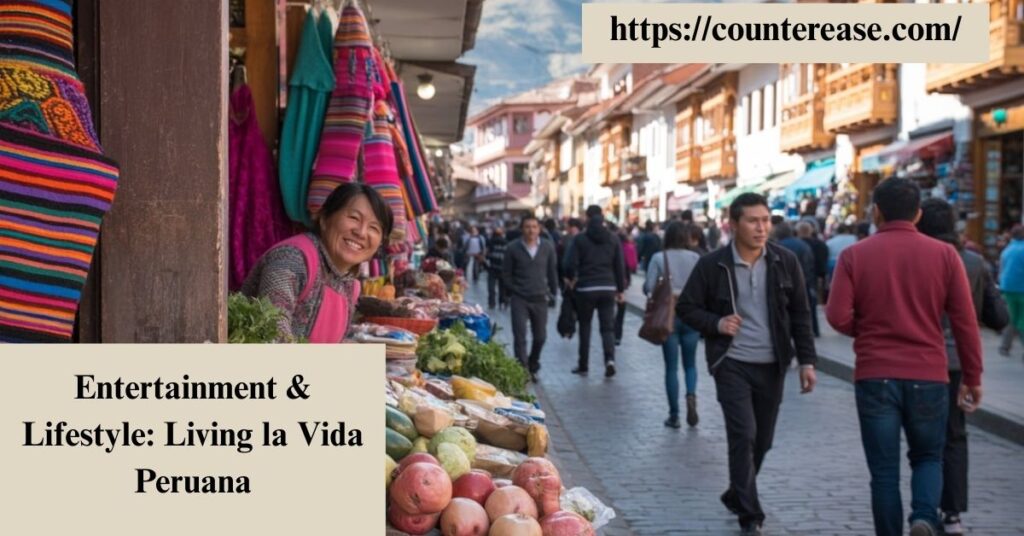
Cultural Experiences
Museums and historical sites:
- Entry fees: $2-8 for most attractions
- Machu Picchu: $45 entrance (plus transportation)
- Boleto Turístico (Cusco): $40 for multiple sites
- Free museum days: Many offer monthly free admission
Concerts and performances:
- Local venues: $5-20 for regional artists
- International acts: $30-100 in Lima
- Traditional music: Often free in plazas and restaurants
- Theater: $8-25 for quality productions
Recreation & Fitness
Gym memberships:
- Basic gyms: $15-25 monthly
- Premium facilities: $40-80 monthly
- Day passes: $3-8 for visitors
- Yoga studios: $8-15 per class
Outdoor adventures:
- Hiking groups: Often free or donation-based
- Surfing lessons: $15-30 per session
- Mountain biking: $25-50 daily rentals
- Rock climbing: $30-60 guided experiences
Social Life & Dining
Coffee culture:
- Local cafes: $1-3 for excellent coffee
- Specialty roasters: $3-6 for premium beans
- Co-working cafes: $2-5 with wifi and workspace
Nightlife:
- Local bars: $2-5 beers, $3-8 cocktails
- Club entry: $10-25 in Lima’s trendy areas
- Live music venues: $5-15 cover charges
- Salsa classes: $8-15 per session
Social dining:
- Group dinners: $8-20 per person at good restaurants
- Food tours: $30-60 for guided experiences
- Cooking classes: $25-80 for hands-on learning
Smart Money Strategies: Insider Tips for Budget Mastery
Successful expat living in Peru requires understanding local customs and money-saving strategies.
Currency and Banking
Exchange considerations:
- USD widely accepted: In tourist areas and major purchases
- Sol for daily expenses: Better rates for small transactions
- ATM fees: $3-5 per withdrawal at most banks
- Exchange houses: Often better rates than banks
Banking for expats:
- Account opening: Requires residency for most banks
- BCP and Interbank: Most expat-friendly institutions
- Online banking: Available but often Spanish-only
- International transfers: $15-40 fees typical
Negotiation Tactics
Rent negotiations:
- Long-term leases: 10-20% discounts for 6+ month commitments
- Upfront payment: 2-3 month advances can reduce monthly costs
- Off-season timing: Move during low tourist periods
- Local connections: Peruvian friends help with better rates
Market shopping:
- Buy in bulk: Significant discounts for larger quantities
- End-of-day shopping: Fresh produce marked down
- Seasonal awareness: Fruits and vegetables 50%+ cheaper in season
- Local Spanish: Even basic skills improve prices
Seasonal Cost Variations
High season (June-August, December-January):
- Hotel rates: 50-100% higher in tourist areas
- Flight prices: Double or triple to popular destinations
- Restaurant costs: 20-30% increases in Cusco, Sacred Valley
- Tour prices: Premium charges during peak times
Shoulder seasons (April-May, September-November):
- Accommodation deals: 20-40% discounts available
- Better availability: More housing and service options
- Moderate weather: Ideal conditions without crowds
- Local experiences: More authentic interactions
City-by-City Cost Comparison
Lima: The Capital Premium
Living in Lima means higher costs but more opportunities:
Advantages:
- Job market: Best opportunities for English speakers
- International amenities: Products and services from home
- Healthcare: World-class private facilities
- Transportation: Extensive public and private options
Premium costs:
- Housing: 40-60% more than other major cities
- Dining: International restaurants 50-100% markup
- Entertainment: Concert and event tickets higher
- Services: Haircuts, repairs, cleaning cost more
Best neighborhoods for expats:
- Miraflores: Tourist-friendly but expensive ($800-1,500 rent)
- San Isidro: Business district, upscale ($900-2,000 rent)
- Barranco: Bohemian, nightlife ($600-1,200 rent)
- Pueblo Libre: Local flavor, good value ($400-800 rent)
Arequipa: Colonial Charm, Modern Costs
Peru’s second city offers excellent quality of life:
Climate advantage:
- Year-round spring: 60-75°F temperatures
- Minimal heating/cooling: Lower utility costs
- Sunny skies: 300+ days annually
Cost benefits:
- Housing: 30-50% less than Lima
- Food: Local restaurants 40% cheaper
- Services: Professional services cost half of Lima rates
- Transportation: Walkable city center reduces transport needs
Expat considerations:
- Smaller community: Fewer English-speaking services
- Limited nightlife: Earlier bedtimes, family-oriented
- Altitude: 7,600 feet requires adjustment
- Job opportunities: Primarily teaching and tourism
Cusco: Tourist Tax vs. Local Living
Living like a local vs. tourist prices makes huge differences:
Tourist area costs:
- San Blas: $400-800 rent in historic center
- Restaurant meals: $8-15 in Plaza de Armas area
- Services: Tourist-oriented businesses charge premium
- Transportation: Tour prices inflated for foreigners
Local area advantages:
- Wanchaq district: $200-450 rent, authentic neighborhoods
- Market meals: $2-4 for filling local food
- Public transport: $0.30 bus rides throughout city
- Community integration: Better Spanish practice, lower costs
Altitude considerations:
- 11,200 feet elevation: Requires 2-4 week adjustment
- Physical activities: Initially more challenging
- Health impacts: Some people cannot adapt long-term
- Heating costs: Nights get cold year-round
Coastal Towns: Beach Life Budgets
Northern beaches like Máncora:
- Seasonal rental: $200-500 depending on time of year
- Surfing culture: Equipment rental $10-20 daily
- Fresh seafood: $3-8 for excellent meals
- Limited services: Banking, healthcare options restricted
Southern coast destinations:
- Paracas: More developed, higher costs
- Ica: Desert oasis, wine country
- Nazca: Archaeological tourism focus
Planning Your Peruvian Budget
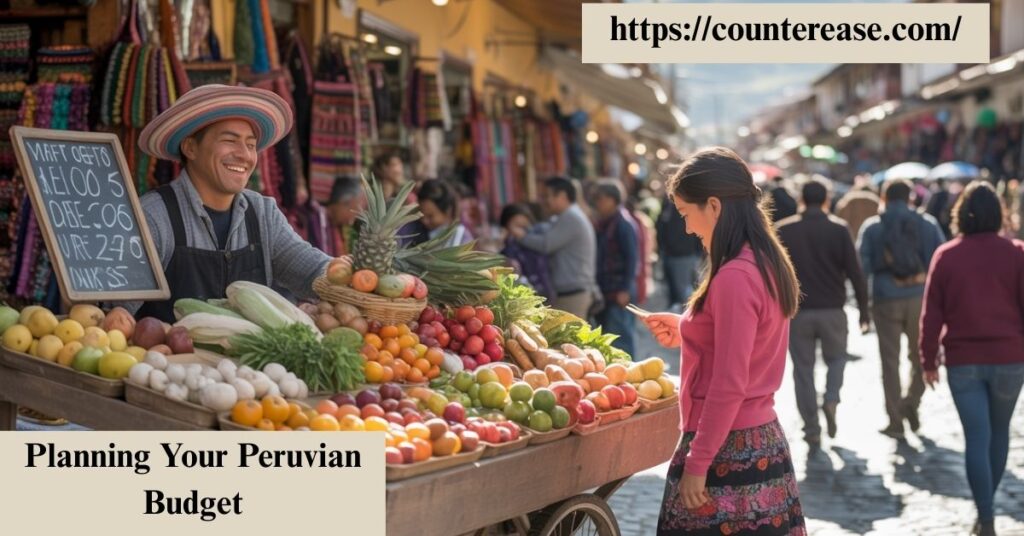
Monthly budget planning should account for your lifestyle preferences and location choice. Here’s a practical framework:
Essential Categories
Fixed costs (60-70% of budget):
- Housing and utilities
- Food and groceries
- Transportation
- Healthcare/insurance
Variable expenses (20-30% of budget):
- Entertainment and dining out
- Travel and tourism
- Shopping and personal items
- Hobbies and activities
Emergency fund (10% of budget):
- Unexpected medical costs
- Emergency travel
- Equipment replacement
- Currency fluctuation buffer
Getting Started Checklist
Before arrival:
- Research neighborhoods online
- Connect with expat communities
- Arrange temporary accommodation (first month)
- Set up international banking access
First month priorities:
- Open local bank account
- Establish phone/internet service
- Find permanent housing
- Locate grocery stores, markets, services
Long-term establishment:
- Build local network and friendships
- Learn Spanish for better rates and integration
- Explore different areas of the country
- Develop income sources if needed
Peru offers an incredible cost of living advantage that allows you to live well for significantly less than most Western countries. With proper planning and local knowledge, you can enjoy a rich, fulfilling lifestyle whether your budget is $800 or $3,000 monthly.
The key to success lies in understanding local customs, learning basic Spanish, and embracing the Peruvian way of life. From the bustling streets of Lima to the ancient pathways of Cusco, Peru provides exceptional value for those seeking adventure, culture, and affordability in one amazing package.
Start your Peruvian adventure by choosing the lifestyle level and location that match your budget and dreams. With costs this reasonable and experiences this rich, Peru might just become your new permanent home.
See Also: Guatemala Airport to Antigua – Six Ways to Get There
FAQs
1. How much does the cost-of-living-Peru typically run per month?
A single person can live on a modest budget for around $520–850 per month, while a mid-range lifestyle averages $1,400–2,320 per month.
2. How much lower is the cost-of-living-Peru compared to the United States?
On average, the overall cost-of-living-Peru is 53.6% lower, and rent costs are about 75% lower than in the U.S.
3. What are typical living costs in Lima under the cost-of-living-Peru framework?
In Lima, a single person’s monthly cost hovers around $840–842, while a family might spend around $2,248–2,255.
4. How affordable are groceries and housing in cost-of-living-Peru?
Groceries cost about $150–250 per month, and a one-bedroom apartment in Lima rents for approximately $400–900 per month.
5. What’s happening with inflation and living costs in Peru right now?
Inflation in Peru remains low—around 1.28% year-on-year in March 2025, rising to 1.69% by June 2025—so living costs remain stable.
Conclusion
The cost-of-living-Peru shows that life in this country can be both affordable and enjoyable. From housing and food to transport and healthcare, expenses remain lower than in many other destinations. Cities like Lima may be higher, but places such as Cusco and Arequipa offer excellent value while still providing comfort and convenience. This balance makes Peru an ideal choice for travelers, digital nomads, and those thinking about moving long-term.
Looking at the cost-of-living-Peru, it’s clear that lifestyle plays a big role in total monthly spending. A budget-friendly approach keeps costs low, while mid-range and high-end choices allow for more comfort and luxury. No matter the budget, Peru provides opportunities to live well without overspending. With its mix of culture, scenery, and affordability, Peru stands out as a destination where money stretches further and quality of life stays high.

Asia Jenni is a passionate travel writer and expert author on CounterEase.com. With a deep love for exploration, she shares insightful travel guides, tips, and destination recommendations, helping travelers discover new places with ease. Her expertise in curating memorable trips and her engaging writing style make her a valuable resource for anyone looking to plan their next adventure.


